US/CAN: +1 (917) 695-3350
EUR: (+351) 217 590 365
US/CAN: +1 (917) 695-3350
EUR: (+351) 217 590 365
Portugal is know to be one of the world’s most searched for holiday destinations. The country's popularity has been increasing enourmously, as more and more guests visit and praise its gastronomy, culture, natural beauty and authenticity. We couldn’t agree more - after all, we live here - and we’ve been benefiting from its climate and lifestyle for quite some time now. The country is doing a great job at promoting but also at securing its identity and its culture. One of the best ways to tap into the authenticity of the portuguese lifestyle and traditions is travelling by bicycle. Cycling Portugal is a great way to get to know the country, especially the less urbanized areas, where you’ll find the quaint villages, the vineyards, the fresh fish, the mediterranean cuisine and, for us cyclists, the absence of cars. Even though the country lacks big infrastructures like cyclepaths, it makes up by having great backroads, from north to south, that you can use to travel in. So, the question remains:
Weather, culture, gastronomy, geographical diversity, history, nature… you name it.
Great, accessible, diversity: With 10 million inhabitants and 92,212 km2 of surface, it’s considered one of the most geographically diverse countries in Europe and home to several UNESCO world heritage sites and traditions - small enough country for you to cover a great portion of it on a bike to get to know lots of different heritage sites, traditions, flavours and natural beauty. Portugal is home to amazing beaches, glacial valleys, big mountain ranges, wine countries and national parks.
Tourism oriented: Tourism is one of the country’s main activities, which means you can find many types of hotels everywhere, overall good english knowledge, good transportation and lots of options of restaurants or cafés. Cycling in Portugal, you’ll find great infrastructures to support your stay: from amazing 5 star hotels to charming palaces and farms that have been restored with great care to host tourists from all around the world. Home to several UNESCO world heritage sites, we proudly take care of our touristic attraction and destinations.
Great cycling climate all year long: By Facing the north Atlantic Ocean, it’s home to a maritime climate, with average annual temperature of 16 Degrees and sunny weather all year long, making it perfect for cycling in Portugal. In July or August, it’s best to choose the region of your liking wisely, as it can be too hot for cycling in some interior areas. Cycling Portugal, you'll experience moderate Autumn and Winter is topped by a sunny spring and summer. This makes it a great option as a cycling holidays destination, either to start off your season or just riding throughout the summer.
Rich history and culture: Portugal has been the epicenter of trade routes, that once led the strongest naval fleet the world had ever seen, spanning over 600 years. Visiting Portugal, you'll encounter a country of explorers and one of the first to adventure into the see and discover cultures in Africa, Asia, India and the Americas, which is still today visible in it’s language, the third most spoken in the world. The “Portucale” county was formed in 1139 by D. Afonso Henriques, in an epic family battle. But even before it’s foundation,“Lusitania” was inhabited by Romans since 45 BC, the Visigoths, the Moors and many others. Today, Portugal is a sovereign nation-state which prides itself of being a part of Europe and having a rich and strong history and identity and as a petite country opened to the world, Portugal has always embraced other cultures and arts. Nowadays, you will find that modern and contemporary architecture, literature, music and theatre, all blend with millennial traditions and craftsmanship. A bike tour in Portugal provides a relaxing and authentic way to discover the country.
Great food and wines: What is more important after having a tough and exhausting ride during the day than to enjoy a delicious meal? Regarding food, Portugal is definitely worth a visit: Being bathed by the Atlantic ocean means Portugal thrives on fantastic, fresh fish and seafood, expertly used in its trademark mediterranean cuisine. But the country’s great variety of cultures and landscapes means each region has an endless variety of cheese, wines and local gastronomy, so if you are cycling Portugal, you'll get to discover the Douro and Alentejo have been voted best wine countries in the world, not just because they are home to some of the best wine tasting experiences, but also because of their picturesque and authentic landscapes, people, wineries, farms and culture. So, everywhere you go, you’ll find it easy to savour great, authentic and simple food. From Michelin star restaurants to local “tascas”, Portugal is a foodie’s heaven.
Great backroads and trails, with small car-density: Most of the country’s population is condensed around Lisbon, Porto and cities nearby it. The countryside is much less dense in population, and so is some of the coastline, natural parks, etc. For instance, the region of Alentejo, which is roughly the size of a country like Belgium, only has 400.000 inhabitants - this causes the backroads to be great to to ride on your bike, in an almost car-free environment, where you can visit the local vineyards - that creates a great atmosphere for a peaceful group ride. Also, many regions have invested in the creation of bike parks and in maintaining and improving trails, making it perfect for mountain biking.
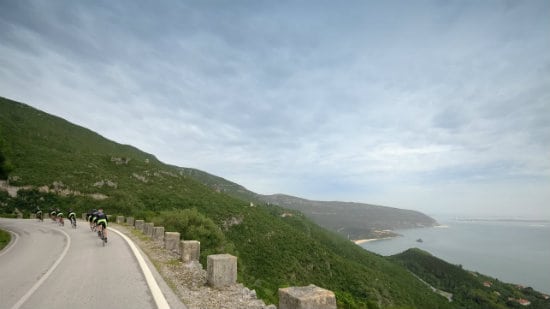
cycling portugal: riding by the Atlantic Ocean
Different regions are better explored in different times of the year...
Cycling Portugal, you’ll find a better experience in off peak season – July and August can be too hot for cycling, and there will be more tourists visiting during these months. You can do a bike tour in Portugal during the winter, the earliest months of the year, from January to March and enjoy the mild temperature, with an average of 17oC to 19oC, making it a great option for road cyclists and cycling groups who wish to improve their skills for the upcoming season. In April, May and June, you’ll benefit from the Spring time and early summer weather, making it a great season for leisure cycling and bicycle touring, with the flowers and crops in full bloom. September, October and even November are great for cycling as well, as the summer transitions into autumn for a great ending of the year - in September and October you can also witness harvest season, particularly in the wine regions of Douro and Alentejo.
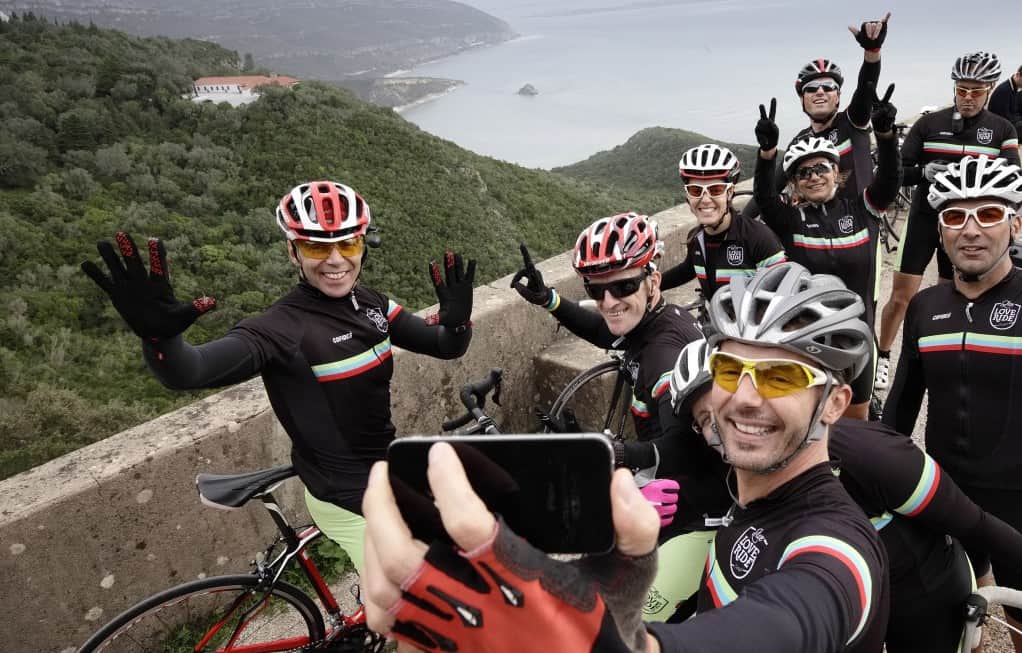
Go on a self-guided adventure or choose a bike tour from a local supplier...
Fly in: To reach Portugal, the best way is to fly to the airport that is the closest to the startpoint of your ride. You can choose the airport that best suits the region you wish to start discovering - Porto airport is perfect to discover the North of Portugal, the Douro, to cycle to Santiago de Compostela by the Minho region; Lisbon airport is a better option to discover Sintra, the silver and blue coasts or Alentejo wine country; Faro airport will provide you a gateway into the south of the country, to the southwest coast and the Algarve. These are the three main airports in continental Portugal. You can also choose to fly to Ponta Delgada, in the Azores archipelago, to discover one of the most naturally beautiful destinations of the world, or to Funchal, in the island of Madeira.
Rent a bike and plan the route for yourself: If you are an experienced rider, looking to expore the country on your own, maybe the best option is to look for Portugal Bike Rentals that can provide you with good, reliable bikes - Portugal is a safe country, that can be explored on a self-guided adventure - just make sure you have the appropriate bike routes, to steer you away from the traffic. You can also explore several options that are more oriented to cycling, like the following:
National Mountain bike centers ( "Centros de BTT"): More than 1330km of identified trails in several mountain bike centers across the country, with special incidence in the North of Portugal
National cycletourism network: A project designed by a portuguese road project engineer and cycle touring enthusiast Paulo Guerra dos Santoos, with over 1375km of macadam trails and backroads, to ride from north to the south of Portugal.
Ecovia Algarviana: A 300km route in the Algarve, great for touring in the South of Portugal. Via Algarviana is a Great Pedestrian Route (GR13) which connects Alcoutim to Cabo de São Vicente, with a length of 300km, mostly installed in the Algarve mountain . It is intended that became part of the Trans-European routes, linking to the E4 and E9. The route crosses eleven municipalities in the Algarve (Alcoutim,Aljezur, Castro Marim, Tavira, S. Brás de Alportel, Loulé, Silves, Monchique, Lagos, Portimão and Vila do Bispo) and about 21 parish councils.
EuroVelo1: From east to west, the Spanish border to Sagres, EuroVelo 1 crosses the Algarve in its entirety - over 200 kilometres of coastline - enough to suit everybody, from sheltered dunes to rocky coves, from tiny bays to vast stretches of open sands, from shallow lagoons to the crashing surf of the wild Atlantic.
Go on a bike tour in one ( or two) regions: There are several companies offering Portugal Bike Tours, operating in different regions. From assisted, self-guided tours to fully guided experiences, choosing to go on a planned experience gives you the opportunity to discover great trails but also hotels, restaurants, attractions, etc. Although the country's extension is not too big, it can take you nearly one week to fully discover a region like the Alentejo, Douro, Algarve or others. So the best option is either book one or two one-week bike tours in the regions you are more keen to discover. Keep in mind that different regions are best suited for different riders, as they have specific altimetries, landscapes and attractions. See below for a list of regions and how to discover them on a bike!
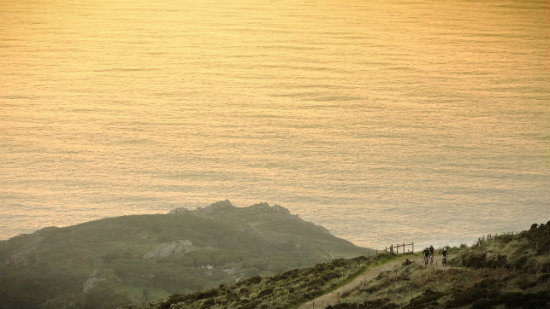
Explore the ones that best fit your riding profile...
When to go: March to June; September to October ( Harvest season)
Type of rider: Intermediate to Expert cyclists
Bike type: Road or Touring bike
Terrain type: Hilly
Duration: 5 to 7 days
Explore the enchanting Douro Valley, a truly remarkable destination for a captivating bike tour in the northern reaches of Portugal. Begin your journey by flying into Porto airport, strategically situated where the Douro River converges with the sea, and the renowned Port wine cellars reside. As the world's inaugural demarcated wine region, the Douro Valley boasts an abundance of cellars, farms, viewpoints, restaurants, museums, and enticing activities for you to discover along your route (though we recommend venturing into the vineyards only after...). The birthplace of Port wine, this region also yields exceptional red and white wines, with the 2011 harvest being particularly noteworthy. To embark on the best cycling routes, head beyond Peso da Régua, the gateway to the wine region, accessible by car, boat from Porto, or a scenic train ride from the picturesque São Bento station.
To fully immerse yourself in the wine country, commence your ride in Peso da Régua and pedal alongside the river to Pinhão, traversing upward to Adorigo, Galafura, Alijó, and other captivating viewpoints. This hilly terrain, marked by both challenging ascents and exhilarating descents, is ideal for intermediate to expert cyclists. However, interspersed with rolling stages, such as the N22 between Peso da Régua and Pinhão, providing moments of respite and recovery. A bit upstream from Pinhão, continue ascending to São João da Pesqueira, ensuring a visit to the São Salvador do Mundo viewpoint. From Pesqueira, effortlessly reach Foz Côa, Moncorvo, or Marialva, initiating the exploration of the second leg of your journey—the Douro International Park. In this region, vineyards give way to expansive olive and almond tree fields, and the landscape evolves into a more rugged, untamed terrain. Uncover ancient treasures like the Foz Côa engravings (over 30,000 years old) and explore historical Portuguese villages such as Marialva, Trancoso, and Figueira de Castelo Rodrigo, each crowned with its castle and fortifications, a testament to their proximity to Spain. The Douro Valley offers an unforgettable blend of challenging cycling routes and rich cultural exploration, ensuring an exhilarating and immersive experience for riders seeking the extraordinary.
Descending to Barca D’alva ( and climbing back) and riding alongside the Douro by the spanish border towards Freixo de Espada à Cinta is just mind blowing. As most of the region has private farms and plantations, we reccomend to explore the region on a road bike or a hybrid bike, as it’s easier to move around and you’ll enjoy a better experience. Another way to explore it is simply by joining a Douro bike tour with Live Love Ride - an excellent way to truly get to experience the lifestyle of this amazing region. View the video below, from one of our bike tours in the Douro with Bicycle Touring Pro:
When to go: February to May; September to November;
Type of rider: Beginner to Expert
Bike type: Road, Touring or Mountain bike
Terrain type: Mixed - mountainous interior, easier by the coast line
Duration: 5 to 7 days
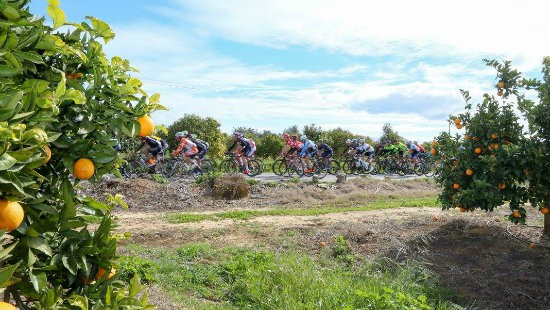
The Algarve, at the bottom of Portugal, is a fantastic place for a bike ride and the country's most popular spot for tourists, attracting nearly 10 million people each year, especially when it's busy. It's great for all kinds of cyclists - whether you're just starting, know your way around a bit, or are an expert. Lots of road cyclists and groups come here to enjoy cycling in Portugal and soak up the warm sun. The land is mostly flat along the coast, making it good for beginners or those who just want to take it easy. But if you're up for a challenge, there are two mountain ranges - the Caldeirão and Monchique. The highest point is Fóia, standing at 902 meters in Monchique. It's a tough climb, but the views of the Algarve coastline and even Alentejo from the top make it totally worth it.
In the Algarve, you'll also find the Ria Formosa lagoon, a big nature area for different birds, covering over 170 square kilometers. The south-facing coastline is about 155 kilometers long and is known for its cool limestone caves, especially near Lagos. You'll discover a variety of beaches, from quiet ones in the Vicentina Natural Park to big sandy ones in Alvor or Falésia. In the southwest, there are some fantastic trails in the Rota Vicentina, marked paths soon to be part of a larger cycling project called EuroVelo 1. This will let you cycle along the Algarve coast from east to west and then up along the southwest coast towards Alentejo. There, you'll find cliffs overlooking beautiful beaches and charming fishing villages. These beaches are flat with a few easy hills, making for a smooth ride. You can stay at a cozy hotel like the "Salgados Palace Hotel," right by the beach, or go on morning rides to Barranco do Velho or Monchique, two beautiful spots around the Algarve. Summer temperatures range from 25°C to 48°C, and that's why you'll find lots of cork, almond, and orange trees there. So, if you're looking for a great bike tour, there are plenty of reasons to choose Portugal.
The easiest way to get there is by flying to Faro. If there is no direct flight which suits your trip or the flights are too expensive, you can book a flight to Lisbon Airport and take a rental car down to the Algarve. There are plenty of good options to choose in the Algarve for a bike tour - explore Live Love Ride’s Algarve Bike tours whether as an Algarve Cycling Retreat or on a bike tour on the portuguese southwest coast.
When to go: March to June; September to November
Type of rider: Beginner to Intermmediate
Bike type: Road and touring bike
Terrain type: Mostly Rolling hills, with flat sections and ocassional climbs
Duration: 5 to 7 days
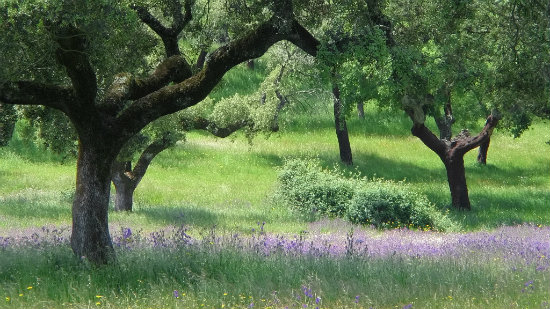
Alentejo, hailed as one of the world's best wine country, is a delightful region in Portugal catering to all types of riders. Here, you'll navigate through endless rolling hills and hidden trails, weaving through vineyards, olive trees, and cork oak fields. The car-free roads and trails in Alentejo create a fantastic setting for any bike tour in Portugal. Its varied topography makes it especially suitable for beginner and intermediate riders, with minimal overall climbs. The landscape transitions from the rugged Marvão and Castelo de Vide mountain range in north Alentejo (Serra de Portalegre) to the olive tree and wine fields in central Alentejo, stretching from Estremoz to the Alqueva Lake, Europe's largest artificial lake. The Sierra D'Ossa's longer climbs provide an extra challenge. It's ideal to explore on a road or touring bike, as many fields are private and gated, often with grazing cattle.
With a total population of only 400,000 inhabitants, Alentejo stands as one of the country's less crowded regions. This means you'll often find yourself cycling along car-free roads and through charming little villages, engaging with the friendly local residents. Restaurants are scattered throughout, offering a taste of the local gastronomy, which boasts rich flavors of herbs, spices, pork, bread, olives, and olive oil—a fusion of Moorish and Portuguese influences. Alentejo's cultural heritage is deeply rooted, with ancient sites like 6000-year-old "Antas" and "Cromeleques," traces of Moorish architecture, medieval castles, and Roman temples. Explore local vineyards like Herdade do Esporão, Adega da Cartuxa, and Monte da Ravasqueira, indulging in on-the-spot wine tastings. One of our clients aptly described it as "Tuscany, without the hills," capturing the essence of Alentejo's charm and cycling allure.
Any bike tour in Alentejo should include Marvão, Castelo de Vide, Crato, Estremoz, Monsaraz and the Alqueva lake and Évora, the regions' capital and UNESCO world heritage fortified city where you'll find a melting pot of influences that make up the Alentejo's culture. From Évora, you can keep riding to the coastline, where you'll find some of the most amazing beaches in the country - Portugal's blue coast and Vicentina natural park, an area that deserves a bike tour on its own, that we'll cover below! Click here to know more about our Alentejo bike tour - wine country and heritage”.
When to go: March to July; September to October
Type of rider: Beginner to Intermmediate
Bike type: touring or mountain bike
Terrain type: Rolling hills, long roads, with ocasional short and steep climbs; bike trails by the Vicentina natural park
Duration: 5 to 7 days
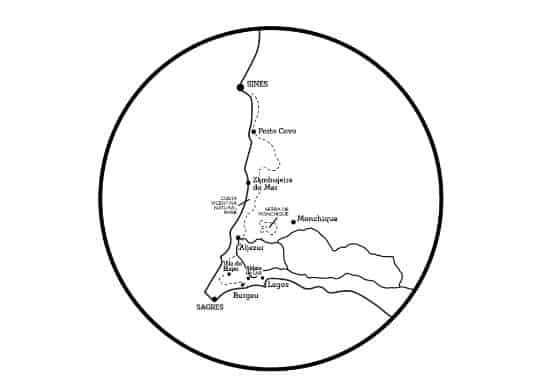
The stretch of the Alentejo and Algarve southwest coast, kissed by the Atlantic Ocean, offers some of Portugal's most captivating oceanic rides, especially within the Vicentina Natural Park. Starting in Sines and extending southward to Sagres (the country's southernmost point), this scenic route encompasses secluded beaches, cliffs, islets, and isolated rocks. The Pessegueiro island, a consolidated dune, rests just steps from the shore, while inland, a harmonious blend of woods, moors, irrigated and rainfed plantations, and production woods unfolds. The Southwest coast and Vicentina Natural Park boast rare botanical species, particularly around the Sagres and São Vicente capes, a diverse nesting bird fauna with white storks building nests on coastal rocks, and a vital passageway for numerous other bird species.
Riding alongside the coastline from north to south, the constant presence of the Atlantic Ocean, coupled with the varied backroads and trails of the Rota Vicentina, creates an incredible atmosphere for cycling. Ideal for mountain or touring bikes due to the mix of pavement along the way, this route accommodates different riders, from beginners to expert cyclists, despite encountering some climbs. Kickstart your bike tour from Lisbon, taking the train to Setúbal or Azeitão. Begin your ride by exploring Arrabida's natural park, then ferry across Setúbal's estuary to Tróia peninsula, where you can pedal alongside beautiful beaches and rice fields in Comporta. Head south to Sines, passing through stunning beaches like São Torpes and Porto Côvo, truly immersing yourself in the trails of the Costa Vicentina.
As it's a natural park, there aren't many hotels in this area, so it's wise to book early and opt for peaceful "herdades" along the way. Don't miss the must-see destinations of Cabo Sardão, Zambujeira, and Odeceixe before entering Algarve, cycling towards Aljezur and exploring the picturesque beaches of Amoreira, Carrapateira, and Arrifana. This coastal cycling adventure promises an unforgettable exploration of Portugal's Atlantic charms.
Riding south, you'll reach Sagres, the climax of your cycling holidays, as the country ends there, in Cape São Vicente. Start riding north towards Lagos, by the beaches of Burgau, Praia da Luz and many others and never forget to bring your swimsuit along for the ride, as there will be plenty of options to freshen up on the way. Click here to know more about our Bike tour in the southwest coast of Portugal or explore more about cycling in this area in Rota Vicentina's website.
When to go: May, June, July, September, October
Type of rider: Intermmediate
Bike type: Mountain and hybrid bikes
Terrain type: Mixed terrain
Duration: 5 to 7 days
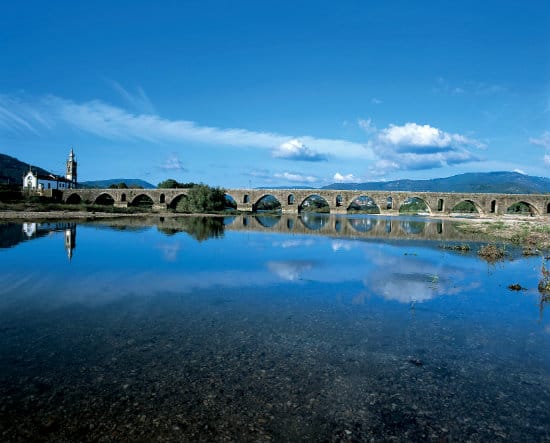
The St. James Path is more than a religious experience; it transcends into a spiritual odyssey for all who dare to embark on its sacred trail. Whether cycling from France, Spain, or Portugal, the Caminho de Santiago leaves an indelible mark on riders, becoming a milestone in their personal journeys. For those choosing the Portuguese Camino, the optimal starting point is Porto (or Lisbon for a 15-day adventure), leading cyclists through the captivating northwest of Portugal—specifically the Minho region—and into Galicia, Spain, culminating in the revered city of Santiago de Compostela. There are two main routes from Porto: the Coastal Path and the Central Path, both heading north—one along the coastline and the other approximately 30 km inland—converging in Pontevedra, Spain, before continuing the pilgrimage to Santiago.
Marked by yellow arrows or shells, guiding the way to the Santiago de Compostela cathedral, both paths are relatively easy to follow. However, the authenticity of the Portuguese Camino sets it apart from its more polished French or Spanish counterparts. The journey is rugged, genuine, and adventurous, providing a unique and enriching experience. The Central Path offers historical and cultural depth in the Minho region, passing through the charming Romanesque cities of Barcelos, Ponte de Lima, and Valença, with a bit more challenging climbs, particularly after Ponte de Lima in the "Labruja" sierra. The Coastal Path is smoother initially but presents technical terrain in the second and third days that may pose a challenge. Both routes feature diverse terrains—paved roads, macadam trails, ancient Roman roads, and occasional technical trails—mostly winding through forests and rural areas, interspersed with urban pockets like Porto and Vigo.
Optimal for the mixed terrain, a mountain or touring bike is recommended for the Camino, though it can be done by road with limitations on following all indications. Intermediate to expert riders can complete the Camino from Porto in 4 to 5 days, while beginners/intermediate riders may take 6 to 7 days. While the Camino is accessible to all, a degree of preparation is advised, especially for beginners, who might find themselves spending long hours on the bike daily. Embark on the Portuguese Camino de Santiago for an unforgettable blend of spirituality, adventure, and personal discovery.
The Camino starts in Porto, the second largest city in Portugal after Lisbon and one of the major urban areas of the Iberian Peninsula. But before you leave and start your journey, you should take your time to taste the famous port and Douro wines, the city's charming architecture and many sights, such as the tower of Clerigos, the amazing Livraria Lello, the old quarters of Baixa with its local shops, restaurants and pastry shops, Ribeira - a quarter by the river Douro facing the wine cellars in Gaia - and other areas. Start to ride from Sé cathedral, either following the coastal path or the central path and discover the Minho region's green wines, local gastronomy, roman heritage and where Portugal started to emerge as a country as it is now, in the 12th century, as the county from which the first portuguese King arose, D. Afonso Henriques, is right here in the Minho. Ride towards Spain's Galiza, discovering the celtic heritage, the "tapas", the amazing seafood and brilliant architecture, until you reach Santiago de Compostela and realize that the Camino never actually ends... 😉 Click to know more about our bike tour from Porto to Santiago de Compostela.
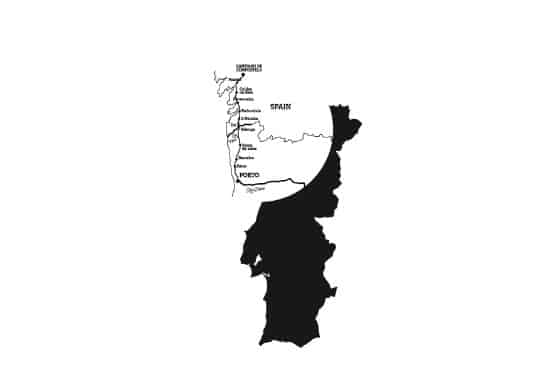
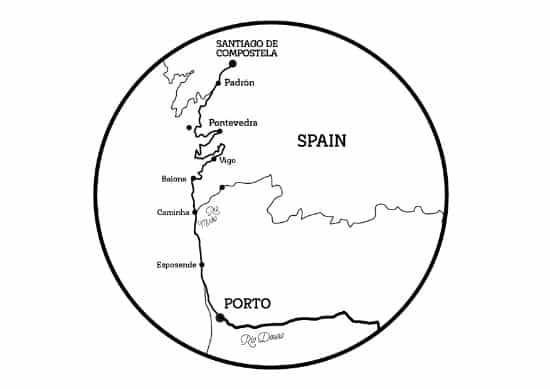
When to go: March to October
Type of rider: Intermmediate to Expert
Bike type: Road bike
Terrain type: Mountainous
Duration: 5 to 7 days
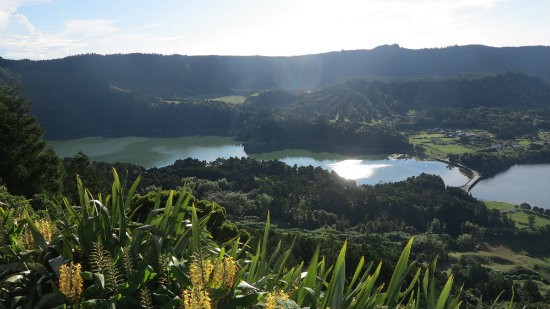
To explore the eastern part of the island, we suggest riding towards "Furnas", a local thermal resort where you get to experience hot thermal springs, while surrounded by sub-tropical nature - you can ride by the coastline for a less hilly ride or, if you want to make it a big day on the saddle, go all the way up to Lagoa do Fogo - a truly epic climb, topped by an amazing view point - before reaching Furnas. From Furnas, you can ride to "Salto do Cavalo" viewpoint, Nordeste, Povoação and others. These are all tough rides, but it will make it even more special to recover in the hot thermal springs afterwards. Also, make sure you mix your cycling with other activities throught your stay - you'll find São Miguel to be a great destination for nature tourism, as you can join a whale watch tour to watch sperm and blue whales, walk the trails along the volcanoes, the lagoons and hot springs, surrounded by the deep blue color of the ocean and the almost fluorescent green of the pastures and forested areas, visit the only tea plantations iavailable in Europe. The island's trademark gastronomy, based on the tender meats and stews, the amazing fresh fish and seafood that are abundant in this part of the Ocean, as well as the surprisingly good white wines, local cheese and sweet pastries are really worht it too. Click to know more about our Azores bike tours.
When to go: April to October
Type of rider: Intermmediate to Expert
Bike type: Mountain, road or hybrid bike
Terrain type: Hilly
Duration: half-day to 2 days
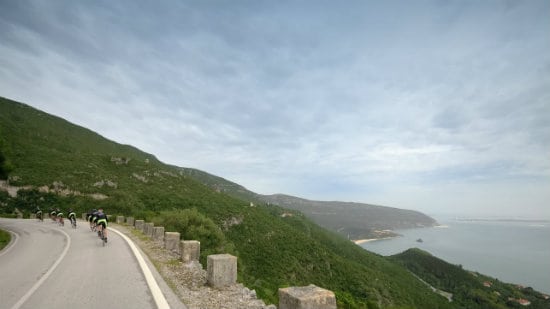
The capital of Portugal, Lisbon, is a beautiful city with more than 2.7 million inhabitants, which makes it the 11th most populated city in Europe. Despite the perfect mixture out of city and beaches, Lisbon is also famous for their rich culture, their local food, their beautiful buildings and the pulsating nightlife. The Castle of Sao Jorge, the Bairro Alto and the Terreiro de Paço are just a few must sees in Portugal's capital. But regarding cycling, the best areas to ride are outside of Lisbon, in the Sintra sierra, north of Lisbon and near Cascais, or the Arrábida Sierra. Both are Natural parks and offer amazing viewpoints, great tarmac roads and bike trails. Sintra is famous for its Moorish ruins, Pena Castle, Quinta da Regaleira and it's luxurious vegetation, making way for narrow roads and trails across it's sierra that overlooks the atlantic ocean, in which you get to ride to Roca Cape, continental Europe's westernmost point.
Arrabida is well known for it's quaint villages, the vineyards, views over Tróia Peninsula and cristaline water beaches like Portinho da Arrábida where you can end your ride by the beach and fresh fish and Azezitão wines. You can explore both regions on road bikes or mountain bikes ( there are great rails and roads in both sierra). To reach Sintra from Lisbon, the best way is to take the train up to the historial center train station, to avoid Lisbon's marginal which is busy with traffic.
To reach Arrábida, the best option is also by train, leaving in Azeitão or Setúbal - you can take your bike in both trains. If you have more than one day in Lisbon, make sure to ride in both Sierras ( and let us know which one you like best, we can't figure that out ourselves). Click here to know more about our Sintra and Arrábida bike tours, or watch our mountain bike video below, fully shot in Sintra and Arrábida:
Embarking on a cycling event in Portugal is not just a ride; it's an immersive journey through diverse landscapes and rich cultural tapestries. Joining a Gran Fondo or cycling event allows riders to explore the beauty of Portugal on two wheels, from the winding roads of the Douro Valley to the historic streets of Lisbon and the coastal landscapes around Porto. Beyond the challenge of the ride, participants have the unique opportunity to connect with local communities, savor regional cuisines, and discover hidden gems along the routes. Here's a list of our some of our favourite events to discover Portugal on a bike:
Road bike events:
Douro Granfondo
Website: Douro Granfondo
Embark on an extraordinary cycling adventure with the Douro Granfondo, meticulously crafted by Bike Service Portugal. This event is not just a ride; it's a journey through the heart of the Douro Valley, a UNESCO World Heritage Site.
Granfondo Aldeias do Xisto
Website: Granfondo Aldeias do Xisto
Nestled among the enchanting 'Shale Villages,' this Gran Fondo promises a ride through the heart of Portugal's natural wonders. Traverse the undulating roads, witness the unique charm of historic villages, and immerse yourself in the soul-stirring beauty of the Aldeias do Xisto.
Granfondo Serra da Estrela
Website: Granfondo Serra da Estrela
Scale the heights of Serra da Estrela in this challenging Gran Fondo. With its majestic mountainous terrain, this event offers cyclists breathtaking views and a test of endurance. Explore the highest peaks and lush landscapes that define the beauty of Portugal's highest mountain range.
Granfondo do Algarve
Website: Granfondo do Algarve
Discover the Algarve region in all its glory with this Gran Fondo. From coastal roads to challenging ascents, cyclists will experience the diverse landscapes of the Algarve. Explore charming towns, coastal vistas, and the unique ambiance that sets this region apart.
Mountain bike events:
Maratona Serra d'Arga
Website: Maratona Serra d'Arga
Set amidst the stunning Serra d'Arga mountain range, this mountain bike marathon offers thrilling trails, challenging ascents, and panoramic views. Cyclists will navigate through lush forests and rocky terrains, experiencing the untamed beauty of northern Portugal.
Loulé Urban Race - Algarve Bike Challenge
Website: Algarve Bike Challenge
Explore Algarve's coastal trails and venture into the hills surrounding Loulé. This event offers a diverse mix of terrains and an exhilarating mountain biking experience.
Trilhos do Pastor - Serra da Estrela
Website: Trilhos do Pastor
Trilhos do Pastor, set in the majestic Serra da Estrela, invites mountain bikers to navigate through ancient shepherd trails and rocky landscapes. With routes that showcase the raw beauty of Portugal's highest mountain range, participants will encounter challenging descents and breathtaking vistas.
TransPeneda-Gerês MTB
Website: TransPeneda-Gerês MTB
Explore the rugged wilderness of Peneda-Gerês National Park in this challenging mountain bike event. Cyclists will tackle varied terrains, from rocky trails to forested paths, as they traverse one of Portugal's most pristine natural reserves.
Epic Camiño Português - Braga MTB
Website: Epic Camiño Português
The Epic Camiño Português in Braga offers an adventurous mountain biking experience along the historic Camino Português trail. Participants will ride through picturesque landscapes, medieval villages, and ancient trails, discovering the cultural and natural heritage of the region.
Embark on an unforgettable cycling adventure through Portugal, exploring a tapestry of landscapes, history, and natural wonders. Here are some of the best cycling routes, each offering a unique experience:
EuroVelo 1 - Atlantic Coast Route
Description: Follow the stunning Atlantic Coast of Portugal on the EuroVelo 1 route. This long-distance cycling path offers breathtaking ocean views, charming coastal towns, and a diverse range of landscapes from Porto to Sagres.
Website: EuroVelo 1 - Atlantic Coast Route
Ecopista do Dão
Description: The Ecopista do Dão is a converted railway track, providing a smooth and scenic cycling path through the Dão Valley. Enjoy the tranquility of nature as you pedal through vineyards, forests, and alongside the Dão River.
Website: Ecopista do Dão
Via Algarviana
Description: Via Algarviana is an inland trail that traverses the Algarve region. This challenging route takes cyclists through the Algarve's rural landscapes, traditional villages, and the scenic beauty of the Serra do Caldeirão and Monchique mountains.
Website: Via Algarviana
Rota Vicentina
Description: Rota Vicentina offers a network of cycling trails along the southwestern coast of Portugal. Divided into Historical Way and Fishermen's Trail, cyclists can explore pristine beaches, dramatic cliffs, and charming villages.
Website: Rota Vicentina
GR22 - Grande Rota das Aldeias Históricas
Description: The GR22, or Grande Rota das Aldeias Históricas, takes cyclists through the historical villages of Portugal. This long-distance trail explores medieval towns, ancient castles, and picturesque landscapes in the central and eastern parts of the country.
Website: Aldeias Históricas de Portugal
Want more info or to contribute to this article?
Visit our website, Live Love Ride - Portugal Bike tours or make sure to contact us on the form below or at ridewith us (@) liveloveride.pt - we'd love to hear from you!
Live Love Ride
Avenida Infante D. Henrique, 311
1950-421
Lisbon - Portugal
Monday to Friday
09AM to 06PM GMT
EUR: (+351) 217 590 365 - Call to the Portuguese national fixed network
US/CAN: +1 (917) 695-3350
Email: ridewithus @ liveloveride.pt
Describe what and how you want to explore Portugal on a bike and let our consultants suggest the best options for you: